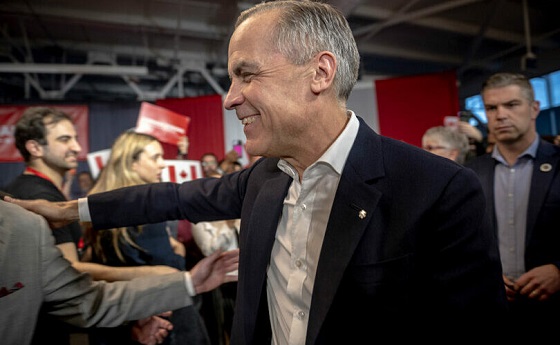By Frank Wright
Instead of changing policies which threaten the collapse of Western civilization, the liberal-global governments prefer to make public opposition to their politics a crime.
The UK’s crackdown on free speech continues, with two online platforms withdrawing over censorship concerns – whilst liberal-critical speakers are banned from entering Britain, and even arrested on arrival.
Following the introduction of laws which could see online platforms fined millions of pounds, free speech social media company Gab and video sharing platform Bitchute have withdrawn their services from UK users.
As Reclaim the Net, a UK-based online freedom campaign group, said on March 28:
“The British government has begun aggressively extending its censorship regime beyond its borders, invoking the sweeping powers granted by the Online Safety Act 2023 to demand compliance from foreign-based platforms.”
Bitchute withdrew its services from UK users “over online censorship laws,” as the Free Speech Union reported on April 10. Gab’s statement, published on its UK domain, said the company was acting to protect British users from being jailed for posting on its platform:
After receiving yet another demand from the UK’s speech police, Ofcom, Gab has made the decision to block the entire United Kingdom from accessing our website.
This latest email from Ofcom ordered us to disclose information about our users and operations. We know where this leads: compelled censorship and British citizens thrown in jail for ‘hate speech.’ We refuse to comply with this tyranny.
The UK government claims its laws support “online safety” – but as Reclaim the Net explains, “critics argue … the term … is being used as a smokescreen for state-sanctioned thought control.”
The future of information in Britain looks bleak, as one UK commentator said, promising a “TV version” of the internet – sterilized by UK government media watchdog Ofcom:
“Unless the White House really forces Britain to do it, Ofcom will not be abolished, because the mainstream parties approve of it and no party that doesn’t will be allowed anywhere near power.”
Millennial Woes concludes that there is likely a “hit list” of further online platforms to be taken down in order, beginning with video outlets Odysee and Rumble, the messenger service Telegram, then the free speech publisher Substack – and on to Elon Musk’s X.
Woes warns:
“If allowed to continue in its current mode, Ofcom will take down the platforms it wants to, then tame the others by hook or by crook. The Internet in Britain will be a homogenised, redacted farce – a pathetic ‘TV version’ of what people in more civilised countries have.”
Cambridge professor arrested
The charge of “state-sanctioned thought control” is reinforced by the arrest – on Good Friday –-of a Palestinian Christian and Cambridge University professor at London’s Heathrow Airport. The reason for Professor Makram Khoury-Machool’s detention was that he has spoken out against Israel’s war in Gaza, as reports from the UK said.
“Keir Starmer’s long and intensifying war on pro-Palestine, anti-genocide speech through the misuse of the Terrorism Act … has continued to escalate,” noted UK outlet Skwawkbox, which covers stories such as this – neglected by the mainstream press “because it doesn’t fit their agenda.”
Professor Khoury, whose speech was criminalized under anti-terror laws, had in the past co-founded an anti-extremism institute in 2016 at Cambridge University.
British left-populist George Galloway responded on X (formerly Twitter), saying the arrest of this “gentle, devout moderate academic father” suggests that the “government has declared war on its own citizens, that liberty is dead in this land, and that Britain is no longer a safe country.”
Galloway’s warning of “It can happen to you. And it will” came a day after reports that a French philosopher noted for his outspoken criticism of mass migration had been banned from entering the UK.
French anti-migration speaker banned
Renaud Camus is the author of The Great Replacement – coining a term now used to describe the liberal-global policy of the replacement of Western populations via mass immigration.
The “great replacement” is routinely “debunked” by the ruling elite as a “conspiracy theory.” As Camus once said to Britain’s Matt Goodwin, “How can it be debunked when it is evident in every street?”
He was due to speak at a “remigration conference” in England on April 26. Organized by the nationalist Homeland Party, it is dedicated to the discussion of policies similar to those now being enacted by the Trump administration.
According to the Daily Telegraph, Camus was denied entry to the UK by government order.
In an email seen by The Telegraph, the Home Office informed Mr Camus that he had been denied the electronic travel authorisation (ETA) needed to enter Britain.
‘Your presence in the UK is not considered to be conducive to the public good,’ the email read.
The Telegraph reports that Mr Camus, “who is gay and has advocated for non-violence,” supplied one convincing explanation for his treatment:
[He] told The Telegraph that ‘of all the European governments guilty’ of allowing unchecked migration, ‘the British government is one of the guiltiest’.
‘No wonder it does not want me to speak,’ Mr Camus added.
The fact the British government is banning speakers who promote policies now being enacted with widespread support in the United States has not only provoked criticism – it may derail UK/U.S. trade negotiations.
Days ago, Vice President JD Vance warned UK Prime Minister Keir Starmer that Britain will get no deal with the U.S. over tariffs if its “hate speech” laws remain in place.
“Sir Keir Starmer must embrace Donald Trump’s agenda by repealing hate speech laws in order to get a trade deal over the line, a Washington source has told The Independent.”
A “Washington source” told the UK-based Independent, “No free speech, no deal. It is as simple as that.”
Vance has been a stern critic of British and European moves towards increasing censorship and the suppression of freedom of opinion, describing it in his February Munich speech as a “threat” to democracy “from within” Western Europe – and one which is led by its liberal-globalist governments.
Vance is reportedly “obsessed by the fall of Western civilisation,” The Independent’s Washington source explained. It is clear that Vance believes that this fall is very much a threat created by the political decisions of governments like Starmer’s.
The use of “hate speech” and “anti-terrorism” laws in these cases shows how the UK state-sanctioned suppression of speech affects anyone – from the left, right, or from the Christian faith – who criticizes the policies of the government.
These are not fringe extremist views, but those held by increasing numbers of ordinary people in Britain and throughout the Western world. Instead of changing policies which threaten the collapse of Western civilization, the liberal-global governments prefer to make public opposition to their politics a crime.
In the case of the British state, its hardline stance to defend its idea of democracy from free speech is now threatening its economic future. The politics and laws celebrated as the guarantee of safety increasingly resemble a form of extremism which will not tolerate debate.












